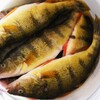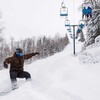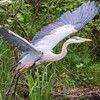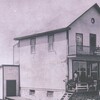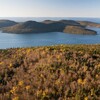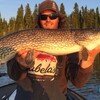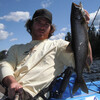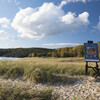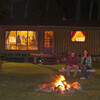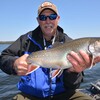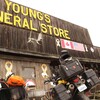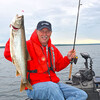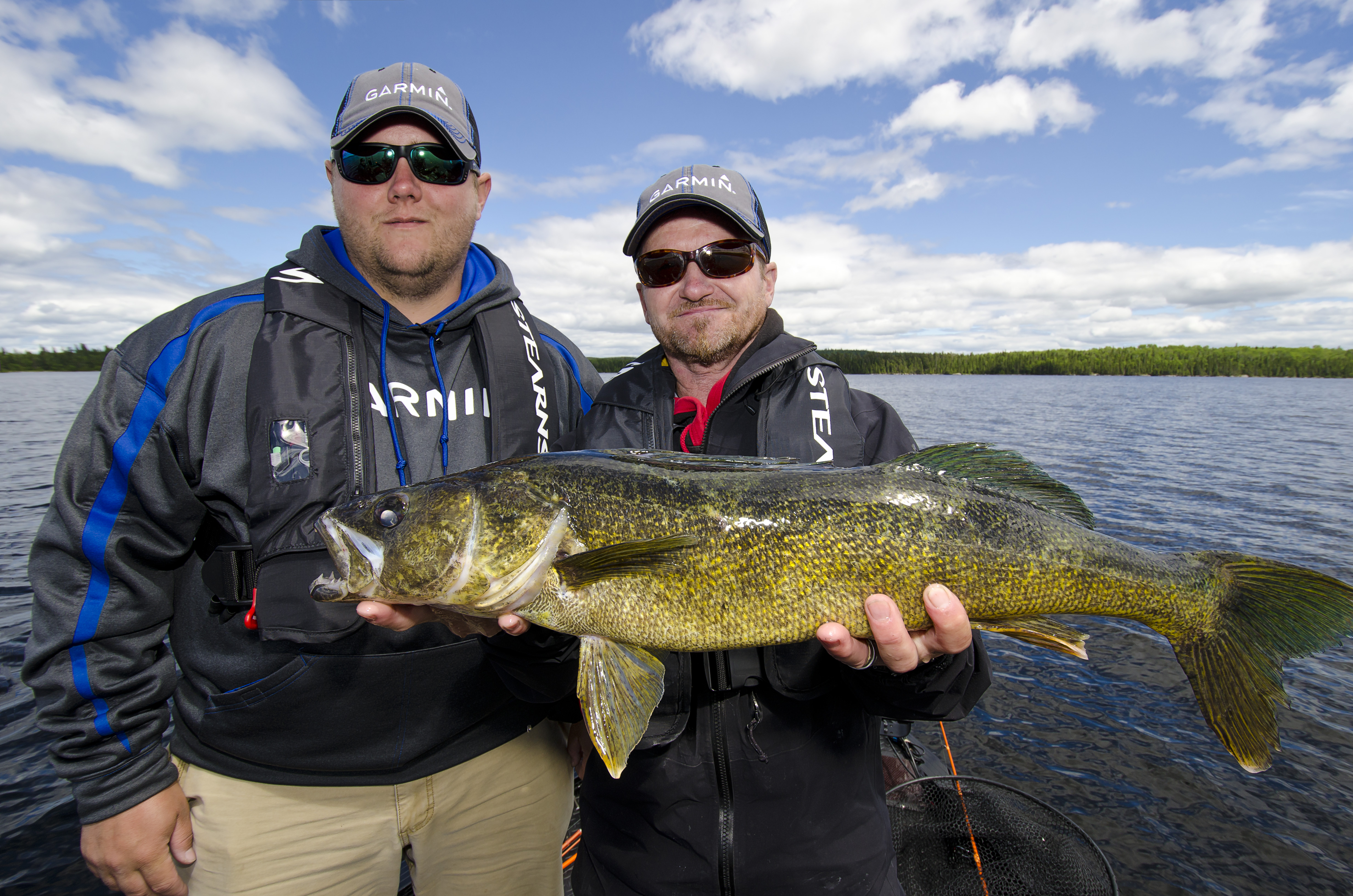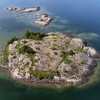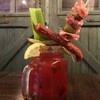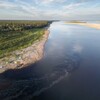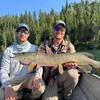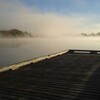
Planes, Trains and Automobiles
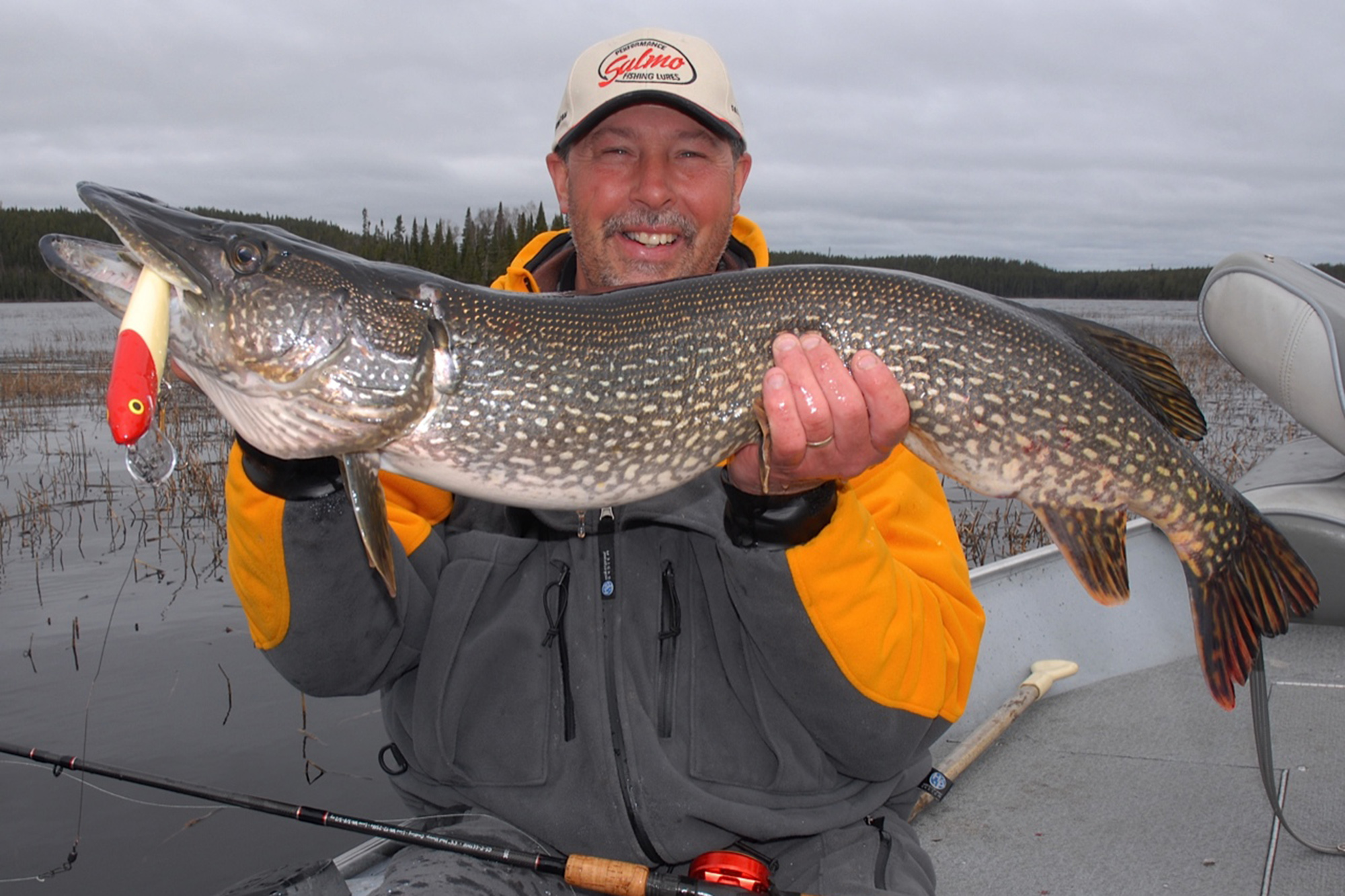
I'm often asked why Ontario waters are featured on so many Fishing 411 TV episodes and magazine articles, and the answer is simple. The Algoma Country region of Ontario is close to my Michigan home and has some of the best inland pike and walleye fisheries in North America. Countless lakes across this region are teeming with walleye and trophy-class northern pike, and you don't need a "Pro Class" walleye boat to catch them. The big appeal to fishing across this region is that most of the fisheries are small enough that an angler in a modest 14- to 16-foot boat is well-equipped. Even better, these fisheries can be accessed in several ways, including floatplanes, the VIA Rail Budd Car and also by a passenger vehicle.

Conserving Fisheries
So why is the fishing in the Algoma Country region of Ontario so good? Decades ago, the Ontario Ministry of Natural Resources recognized the need to intensively manage their pike, walleye, trout and bass fisheries to maximize natural reproduction and fish populations. Ontario fisheries managers accomplished this goal through a series of industry-accepted methods, including implementing slot limits designed to encourage the harvest of smaller immature fish while releasing the larger specimens that do most of the spawning.
Ontario fisheries managers also reduced the number of fish allowed in the daily bag, and in Ontario, there are no possession limits. What that means is if the limit is 4 walleye, the limit you can have on your person or back at camp is 4 fish, period. To keep another walleye, you have to consume fish plain and simple.
The only way to encourage selective harvest of walleye, pike or other species is to write these mandates into the fishing rules and enforce them. Most states have not done this, and Ontario has. That's the primary reason almost every lake in Ontario is teeming with walleye, pike and other popular species.
When To Fish In Algoma Country
The question of when it is best to make a trip to Ontario depends on exactly what species of fish is going to be targeted. For anglers interested in catching primarily pike and walleye, the month of June is hard to beat. It's during this post-spawn month that both species are most likely going to be found in shallow water and probably near flowing water.
After the spawn, both walleye and pike feed aggressively to recover the energy lost during spawning. It's common to catch both fish in the same place using the same presentations.
Anglers who are just interested in walleye can visit Ontario in literally any month, including late May, June, July, August, September and even October and come home happy they made the trip. The advantage of fishing later in the summer is that walleye tend to be found in deeper water, which makes them very vulnerable to being found using sonar. All summer long, walleye are going to be found in water from 20 to 40 feet deep across most of Ontario.
Armed with this knowledge and a good sonar unit, it's a simple matter to dissect the lake using the sonar to search for pockets of fish. We'll share more on how to catch deep-water walleye in a moment.
For the angler most interested in pike fishing, I suggest targeting early spring and early fall. Adult pike are found in the shallows only when water temperatures are cool. Once the surface water hits 60°, most of the adult pike will move offshore and seek out deeper and cooler water. Late in the summer, when the surface waters again start to cool down, pike once again invade the shallows.
The one exception to this rule is in the extreme northern part of the province, where lake surface water temperatures rarely exceed 60°. In these cases, pike stay shallow pretty much all spring and summer.
Spring Walleye Tactics
Early in the spring, when walleye are shallow, casting with jigs tipped with soft plastic baits ranks as my "go-to" walleye presentation. This presentation covers water fairly quickly and, more importantly, presents the jig away from the boat. Because it's tough to keep live bait on the hook while casting, soft plastics are the best option for this particular jig-fishing presentation.
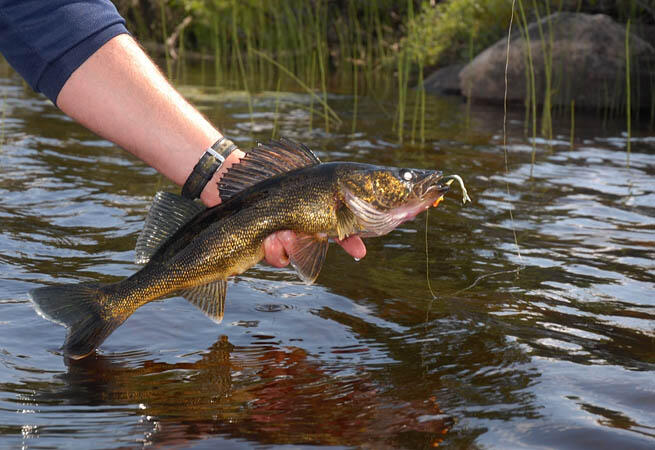
The common twister tail type grubs work, but I have more faith in some other soft baits, including the 3-inch Berkley Gulp Minnow and Berkley Power Bait Ripple Shad. Both of these jig dressings are scent-impregnated and come in a host of colour options.
For pitching jigs, I'm most often using a seven-foot medium/light spinning outfit rigged with a 10-pound test super braid line and either a 1/8- or 1/4-ounce jighead. My favourite jig for decades has been the Bait Rigs Odd Ball, which is a stand-up style jig ideal for swimming, dragging or hopping along the bottom.
Spring Pike Tactics
In the spring, pike can be caught casting many baits including spoons, bucktail spinners, spinnerbaits, crankbaits and jigs. I have the most faith in saltwater-sized jerkbaits, including the Salmo Warrior Crank or Bomber Magnum Long A.
These baits are shallow diving, and when worked properly, literally turn pike inside out. Make a long cast and lower the rod tip towards the water. While reeling slowly, use your wrist to snap the rod tip every few seconds. This causes the bait to dart in a different direction every time the rod tip is jerked.
If the bait dives deep enough to start fouling on aquatic vegetation, raise your rod tip a little higher off the water and repeat the same retrieve. The goal is to bring the bait over the top of emerging weed cover. Detecting strikes will not be an issue. Big pike tend to unload on a jerkbait, leaving a big boil on the surface and a look of astonishment on the angler's face.
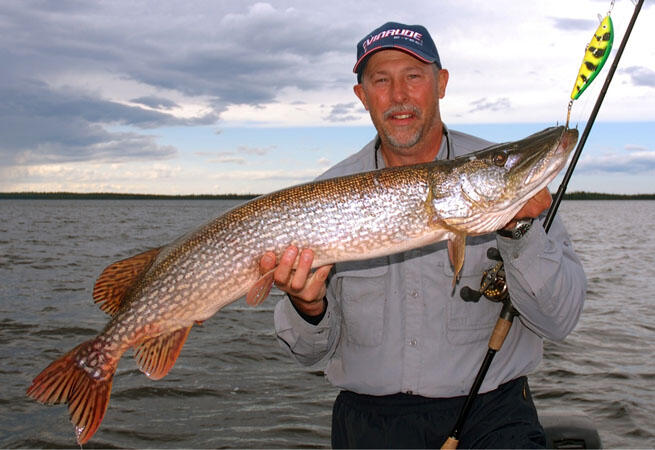
The biggest mistake I see pike fishermen in Ontario make is that they don't throw big enough lures. To target pike and especially big pike, you need to throw larger baits. Pike will eat the small stuff as well, but you will spend far too much time catching smaller immature fish instead of the trophy-class northern pike Algoma Country is famous for.
Heavy-action spinning or baitcasting equipment armed with a 40- to 65-pound test super braid line is best suited to throwing these big pike lures. I add a 36-inch leader of 65- to 80-pound test fluorocarbon line as a bite-proof leader.
Summer Walleye Tactics
In the summer, when walleye move deep, live bait rigging becomes the best way to catch these fish. The common bottom bouncer (usually a 2-ounce size) equipped with a 40- to 50-inch spinner rig and baited with nightcrawlers is very hard to beat.
The best blade type tends to be Colorado blades, and the most productive blade sizes are generally 3, 4 or 5. Drifting or slow trolling these rigs near the bottom is almost a guarantee of walleye fishing success.
Nightcrawlers can be transported to Ontario so long as they are not packaged in dirt bedding. I pack my crawlers in commercial paper-style bedding and typically go through a full flat (approximately 500 crawlers) when fishing with four guys for a week-long trip.
Summer Pike Methods
Catching adult pike in summer requires trolling crankbaits for suspended fish that are seeking out cooler water. Deep diving minnow baits like the 800 series Reef Runner, 25A Bomber, Deep ThunderStick, and Rapala TDD11 Taildancer work well when flatline trolled or, better yet, fished in combination with in-line planer boards like the popular Off Shore Tackle Side-Planer.
Pike suspends over sunken islands or off the tip of points that taper into deep water. Mostly these fish are suspended 20 to 30 feet down over 40 feet of water or deeper.
Fall Walleye Tactics
In the fall, walleye once again move shallowly and feed heavily. Casting or trolling crankbaits along the shorelines, weed edges and main lake points is a good way to search for fish. For casting chores, compact baits like the Yakima FatFish or Timber Tiger are good choices. For trolling applications, minnow divers like the ThunderStick Jr. by Storm, Rebel Spoonbill, Reef Runner Deep Little Ripper or Rapala Deep Husky Jerk series are good choices.
Fall Pike Tactics
In the fall, pike start to move shallow again when the surface water dips below 50 degrees. These predators move shallowly for the sole purpose of feeding. Large shallow diving stickbaits like the Salmo Whitefish or Rapala No. 18 Minnow are great baits for either casting or trolling.
In weedy conditions, weedless spoons like the largest available Johnson Silver Minnow can be productive. I tip the spoon with a piece of pork rind or a curl tail grub to add additional action. A gold spoon tipped with a white curl tail grub is hard to beat for fall pike in shallow water.
Summing It Up
Ontario's Algoma Country is positioned on some of the best pike and walleye fishing in North America. Cashing in on these amazing fisheries is as simple as getting online and searching for the countless outfitters who offer lodging and fishing packages aimed at the American angler.
Fly-in trips are always good, but Ontario also offers a host of destinations that can be accessed by train that are just as remote and somewhat less expensive. For the angler who wants to use his or her own boat, there are countless drive-to fisheries that offer up world-class walleye and pike fishing. The web pages listed at the end of this feature are a good place to start the search.
As an angler who has experienced all of the above options many times, you can't make a bad decision so long as you're heading north to Ontario. Planes, trains and automobiles all lead to great fishing in Algoma Country.
Recommended Articles

The Group of Seven in Algoma

9 Facts to Know about the Agawa Canyon Tour Train

